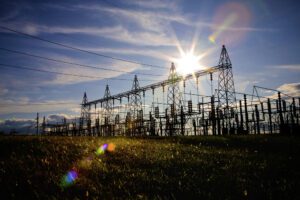Canadian landlords and tenants alike can benefit from pursuing energy efficiency upgrades in rental properties. By improving energy efficiency, landlords can attract environmentally-conscious tenants and potentially justify higher rental rates, while tenants can enjoy lower energy bills and increased comfort in their living spaces.
In this comprehensive guide, we’ll explore various energy efficiency upgrades suitable for rental properties, focusing on practical, cost-effective solutions with tangible benefits for both landlords and tenants. We’ll discuss how to navigate the key challenges and questions that may arise when considering upgrades, such as sharing costs and coordinating upgrades with ongoing tenancies.
Window and Door Upgrades: Improving Insulation and Reducing Energy Loss
One of the most impactful changes that can be made in a rental property to improve energy efficiency is upgrading windows and doors to minimize energy loss and improve insulation.
- Window Replacement: Consider replacing single-pane windows with energy-efficient double or triple-pane alternatives, which can significantly reduce heat loss and lower energy bills.
- Weatherstripping and Caulking: Ensure all windows and doors are properly sealed using weatherstripping and caulking to prevent drafts and energy leaks.
- Door Upgrades: Replace older, poorly insulated doors with energy-efficient models or add storm doors to provide an extra layer of insulation.
Heating and Cooling System Updates: Enhancing Performance and Energy Efficiency
Heating and cooling systems are often the largest contributors to a rental property’s energy consumption. Making upgrades to these systems can result in significant energy savings for landlords and tenants alike.
- Furnace and Air Conditioner Replacement: If the rental property currently has an outdated furnace or air conditioner, consider upgrading to more energy-efficient models to reduce energy consumption and costs.
- Programmable Thermostats: Install programmable thermostats to allow occupants to optimize heating and cooling schedules for their lifestyles, preventing energy waste.
- Regular Maintenance: Ensure heating and cooling systems receive regular maintenance, such as filter replacements and tune-ups, to keep them running efficiently.
Energy-Efficient Appliances: Saving Energy and Reducing Utility Bills
Appliances also play a significant role in a rental property’s overall energy consumption. Landlords and tenants can work together to update appliances and reduce energy costs.
- Energy Star-certified Appliances: Replace outdated appliances with Energy Star-certified alternatives, which are designed to be more energy-efficient, helping to lower overall utility bills.
- Tenant Education: Provide guidance to tenants on how to optimize energy usage when operating appliances such as dishwashers, washing machines, and dryers.
- Shared Laundry Rooms: For multi-unit rental properties, consider installing energy-efficient commercial-grade machines in shared laundry rooms, reducing overall energy consumption across multiple units.
Lighting Solutions: Efficient, Cost-Effective, and Environmentally Friendly
Simple lighting upgrades can play a considerable role in a rental property’s energy efficiency, often at a relatively low cost.
- LED Bulbs: Replace traditional incandescent or CFL light bulbs with long-lasting and energy-efficient LED bulbs, which consume significantly less electricity while providing the same level of light output.
- Motion Sensors and Timers: Install motion sensors or timers on outdoor lighting fixtures and common areas such as hallways to reduce unnecessary energy consumption.
- Educate Tenants: Encourage tenants to adopt energy-efficient lighting habits, such as turning off lights when not in use, and promote the use of natural light whenever possible.
Calculating Savings and ROI with Muvar’s Cost Calculator
As landlords and tenants consider various energy efficiency upgrades for rental properties, it’s essential to understand the potential costs, savings, and return on investment (ROI) associated with each improvement. Muvar’s Cost Calculator (https://muvar.ca/cost-calculator/) is an invaluable tool that can assist both parties in evaluating the financial impacts of these upgrades.
By inputting relevant data, such as current energy rates and the property type, the Muvar Cost Calculator can estimate potential costs which can be compared to actual cost and the potential savings can be determined. With this knowledge, landlords and tenants can confidently invest in energy efficiency upgrades, knowing they are making sound financial decisions while contributing to a more sustainable future.
Conclusion
The pursuit of energy efficiency in rental properties offers a wealth of benefits for landlords, tenants, and the environment. By making targeted upgrades to windows, doors, heating and cooling systems, appliances, and lighting, both parties can work together to lower energy consumption, reduce costs, and create more comfortable, eco-friendly living spaces.
Leveraging tools like Muvar’s energy cost calculator can help guide informed decision-making by providing insight into the potential savings and ROI associated with these investments. By embracing energy efficiency and working collaboratively, landlords and tenants can transform rental properties into eco-conscious, cost-effective havens – all while reaping the financial, environmental, and comfort-enhancing benefits that come with smarter energy management.





